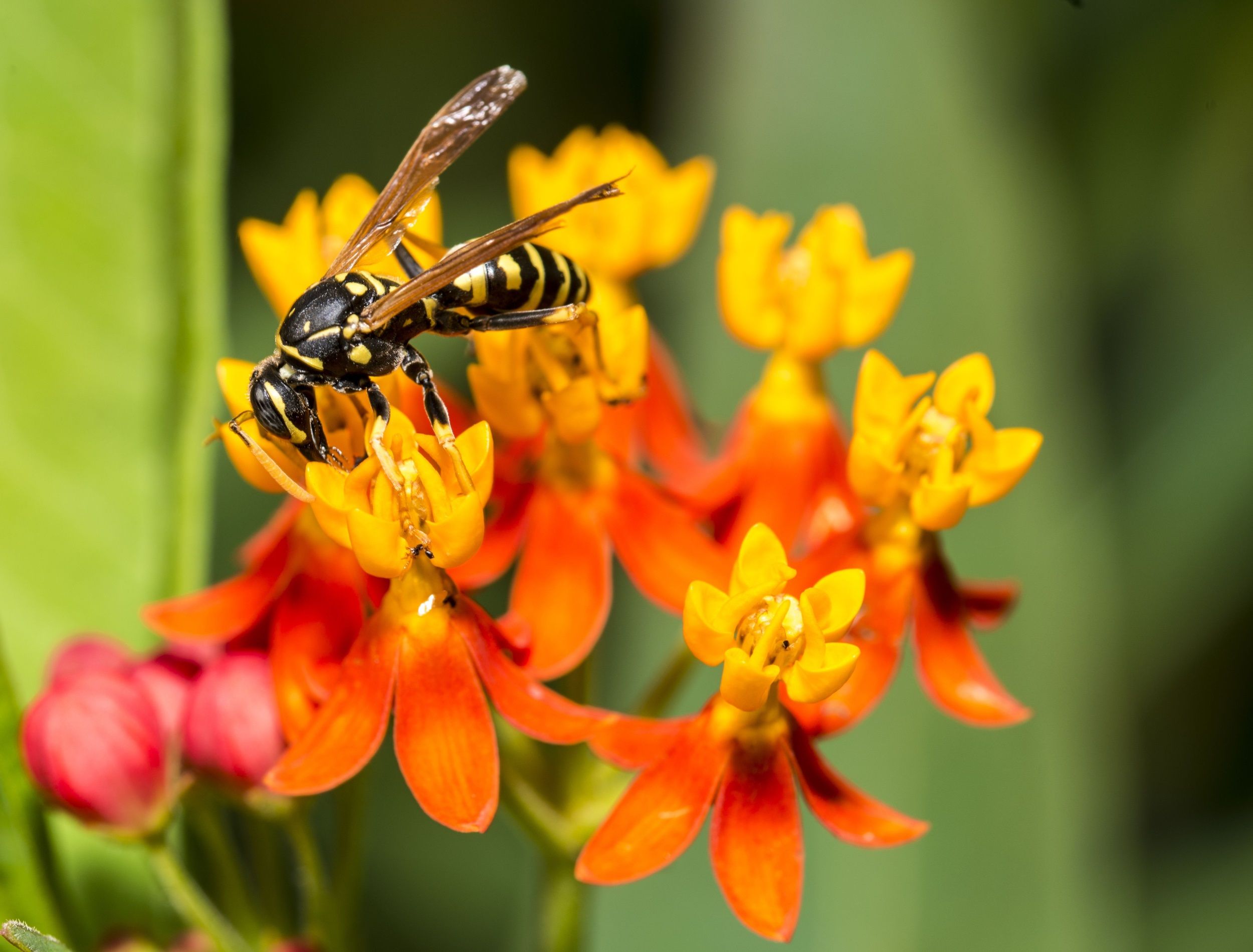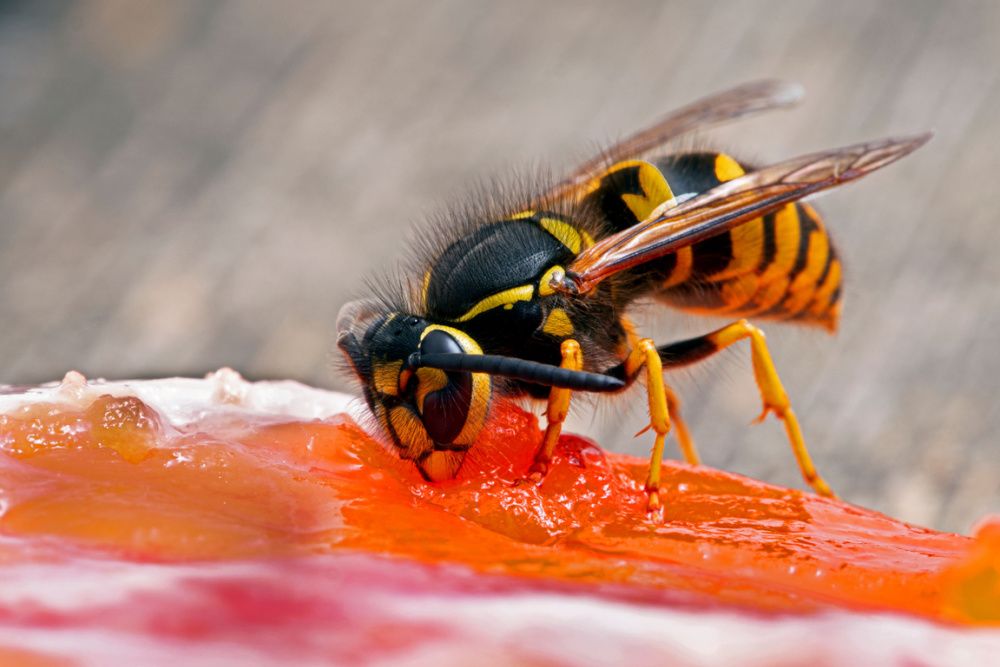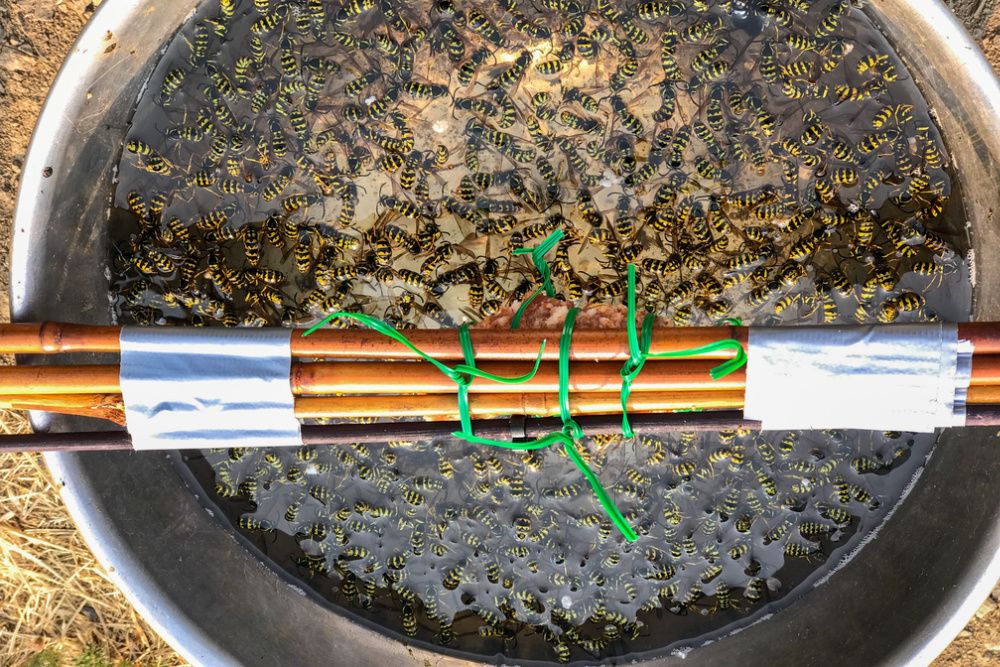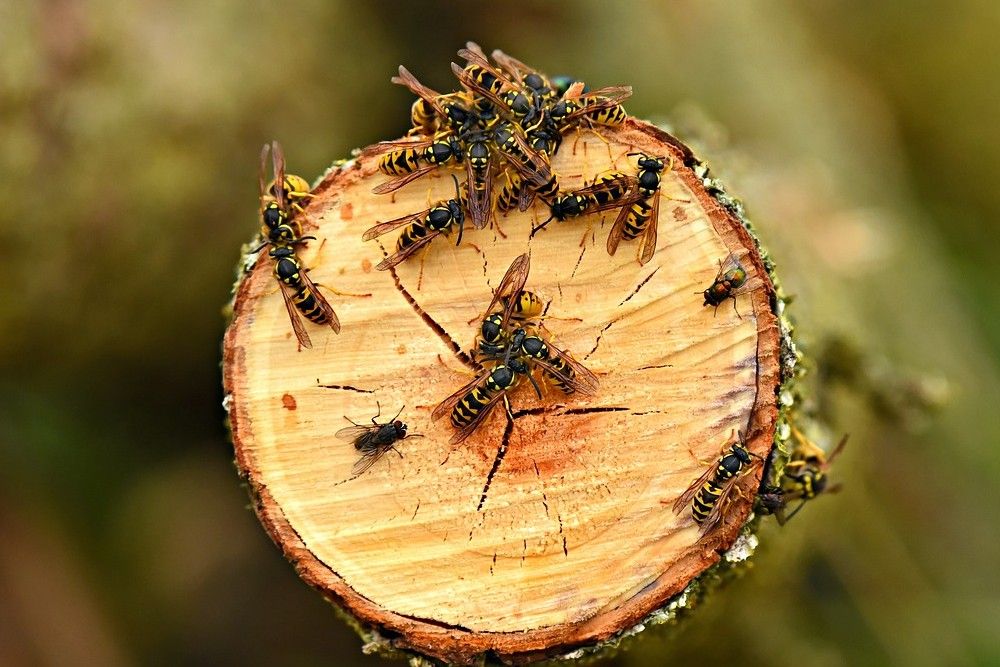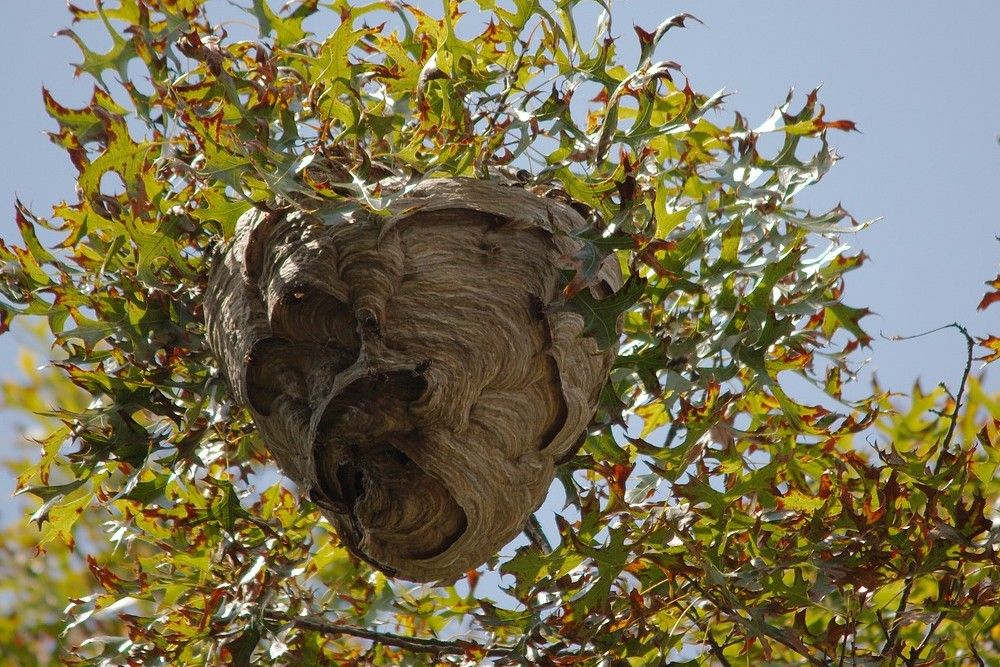Nothing strikes fear into the heart of a picnic-goer faster than the drone of a black and yellow insect flying around their head. But before you start swatting, learn to identify what is buzzing around -- and what drew them there. Along with yellowjacket habits and where they prefer to nest, you'll discover how to stop them from hijacking your next backyard barbeque!
How to Spot a Yellowjacket
Image credits: Ernie Cooper via Shutterstock
Yellow jackets are a type of wasp that can wreak havoc in an encounter. They are highly aggressive and will likely sting multiple times, which makes them more dangerous than similar-looking bees or hornets. Stings are painful, and their venom is more potent than honey bees. Avoid swatting at yellow jackets if you encounter them; any swift movements will only attract more yellow jackets to your location. In addition, an injured yellow jacket will release an alarm pheromone, triggering defensive behavior from other colony members nearby.
Black and yellow striping on their bodies resemble other insects. You're dealing with yellow jackets when you see a thin waist dividing two segmented, hairless body parts, elongated wings, and an overall size between ¼ to ⅝ inches long.
The three most common types of yellowjackets in the US are:
- The Western Yellowjacket (Vespula pensylvanica).
- The Eastern Yellowjacket (Vespula malculliforna).
- The German Yellowjacket (Vespula germanica).
The Western and Eastern Yellowjackets build underground hives. In contrast, the German Yellowjacket builds paper nests in trees or other high places, including in and around houses, sheds, eaves, and attics.
Now that you know more about these insects, you'll be able to identify them more easily. Now it's time to learn how to prevent confrontations, manage a yellow jacket population, and deal with nests.
What You’ll Need:
Image credits: Jennifer Larsen Morrow via Shutterstock
There are various methods to prevent and deal with yellow jackets, and they require different materials.
- Food coverings (plastic wrap/lids)
- Canned chicken (for trapping bait)
- 5-gallon bucket (for trap)
- Soap and water (for trap)
- Imitation wasp nest
- Protective clothing, gloves, and protective eyewear (for nest removal)
- Peppermint castile soap (for nest removal)
- Cold water and boiling water
- Insecticide spray (for nest removal)
Preventing Confrontations
Image Credit TembelaBohle via Pexels
Yellow jackets eat sugar and carbohydrate-rich food, including plant nectar, tree sap, fruits, and garden pests like flies, crickets, aphids, moths, and spiders. They even eat meat and fish! Unfortunately, the yellow jackets' food sources deplete drastically in late summer and early fall. This scarcity triggers their infamous aggression towards humans and interest in their food. In addition, yellowjackets frequently raid weak bee hives to eat their honey.
Keep any food and drinks covered with plastic wrap or tight-fitting lids whenever possible. Doing so will lessen the likelihood of drawing yellow jackets to your outdoor location. Check for wayward yellow jackets before drinking if you have open soda cans. People have had a life-threatening sting from swallowing a yellow jacket from an open beverage container. Ensure that any outdoor garbage cans have tight-fitting lids that prevent odors from spreading.
Bright colors attract yellow jackets, so avoiding these colors in your clothing is beneficial. Also, refrain from wearing sweet perfumes or scented body care products that could attract yellow jackets on the hunt for food. Lastly, if you see a yellow jacket nest, stay far away as they are very territorial.
Trapping Yellowjackets
Image Credit: MabelAmber via Pixabay
Many people have success trapping yellow jackets and lessening the population in their immediate area by using homemade bait traps. First, fill a five-gallon bucket with soap and water.
Next, hang a piece of canned chicken as bait 1 or 2 inches above the water's surface. Cover the bait and bucket with mesh so other animals don't eat it. The chicken will attract the yellow jackets, and they will often become too full to fly and drop into the water, unable to fly away. The detergent will break the surface tension of the water and causes the yellow jackets to sink and drown.
A protein trap is most effective in the spring and summer because the yellow jackets require extra protein to feed their babies. If you're looking to trap yellow jackets at the end of summer or the beginning of fall, choosing a sweet bait will be more successful if you use this trapping method. That's because the smell of decaying fruit attracts these insects at this time of year. Empty and refill your bait once a week.
Nest Removal
Image Credit: 4Me2Design via Pixabay
Removing a yellow jacket nest should be a last resort. These insects are beneficial as they pollinate flowers and prey on beetles and grubs. In their lifecycle, the whole colony except for the queen will die at the first fall frost, so keep that in mind before you remove a nest.
If you have a hanging nest infestation, a non-invasive option is to purchase an imitation nest and hang it nearby to the colony. Yellow jackets are highly territorial and prefer to nest away from other wasp-like insects. If they see an imitation nest, they are likely to move their own elsewhere.
Calling a professional to deal with a yellowjacket nest is always a good idea. But, if you decide to deal with a yellow jacket ground nest on your own, take the utmost precautions. Wear protective clothing covering as much of your body as possible, gloves, sturdy shoes, and protective eyewear. Only deal with yellow jacket nests at night when they are less active and can’t see as well in the dark.
First, mix peppermint castle soap 50/50 with water and pour it into the nest entrance using a long-spout watering can. Follow that mixture immediately with a kettle full of boiling water. Once this is done, leave the area immediately and keep all humans and pets from the site for several days.
If you feel insecticide is necessary to deal with a yellow jacket nest, take the same precautions as above, wearing protective clothing and spraying the nests at night. For either type of nest, spray the insecticide directly into the entrance and leave the area immediately. See insecticide instructions for further applications.
Buzzzz Off!
Although yellow jackets can be pesky, they are essential insects that shouldn't be disturbed if possible. By following these tips when you find yourself in an area with yellow jackets or dealing with an intrusive nest, you can limit the damage to yourself, others, and the yellow jacket colony in question.
Have you dealt with a yellow jacket infestation before? Comment below with the tips and tricks you've used successfully!

